How comedy conquered the world of travel writing
Roula Khalaf, Editor of the FT, selects her favourite stories in this weekly newsletter.
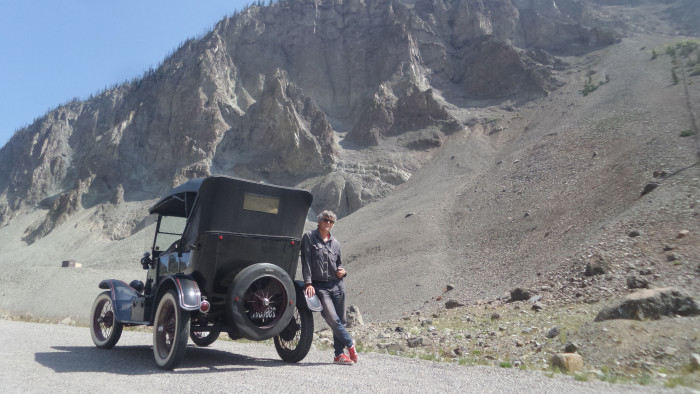
Twenty years ago this summer, white-faced and jelly-legged, I pushed my bike down the gangplank of an Icelandic container ship and on to a Reykjavik quayside. The storm-tossed four-day crossing from England was the first leg of a journey following in the cold, wet footsteps of Lord Dufferin, who in 1856 sailed all around the North Atlantic and right up to Spitzbergen, gateway to the North Pole. Dufferin was the blithe and indefatigable embodiment of Kipling’s “If”, a witty, erudite adventurer who would later serve queen and country in the most exalted offices of empire, as viceroy of India and governor-general of Canada. Having spent the voyage in the grip first of catastrophic seasickness, and latterly a hallucinogenic overdose of remedial medication, I had long since given up on emulating the young lord’s intrepid insouciance as I traced his itinerary. Instead I was now firmly identifying with his misanthropic, self-pitying valet Wilson, the eminently defatigable butt of Dufferin’s bons mots.
The contrast between Dufferin’s derring-do and my Wilsonian derring-don’t underscored the erratic two-month journey that ensued, and the book I wrote about it, my first. A durable truth had established itself, best summed up by a paraphrase of Tolstoy’s famous quote about families: happy holidays are all alike, but every unhappy holiday is unhappy in its own way. Trauma, discomfort and humiliation regrettably make better copy than plain sailing. Perhaps I should have explained that to the unfortunate cabin-mate who watched me throw up into my polo neck as I was pulling it off.
But Dufferin’s own travelogue, Letters from High Latitudes, also offered unexpected inspiration. This work should by rights have been a typical product of the British colonial era’s literary output: the humble-brag telling of hardships borne stoically in pursuit of a punishing expeditionary quest. Instead, Dufferin largely played it for laughs. He reports that Wilson was “never seen to smile but once, when he came to report that a sea had nearly swept his colleague, the steward, overboard”. An alcoholic banquet with the governor of Iceland is described with the reckless brio of a Victorian Hunter S Thompson: “Was not I my great-grandfather’s great-grandson, and an Irish peer to boot? Were there not traditions, too, of casks of claret brought up into the dining room, the door locked, and the key thrown out of the window? With such antecedents to sustain me, I ought to be able to hold my own against the staunchest toper in Iceland. So, with a devil glittering in my left eye, I winked defiance right and left, and away we went at it again.”
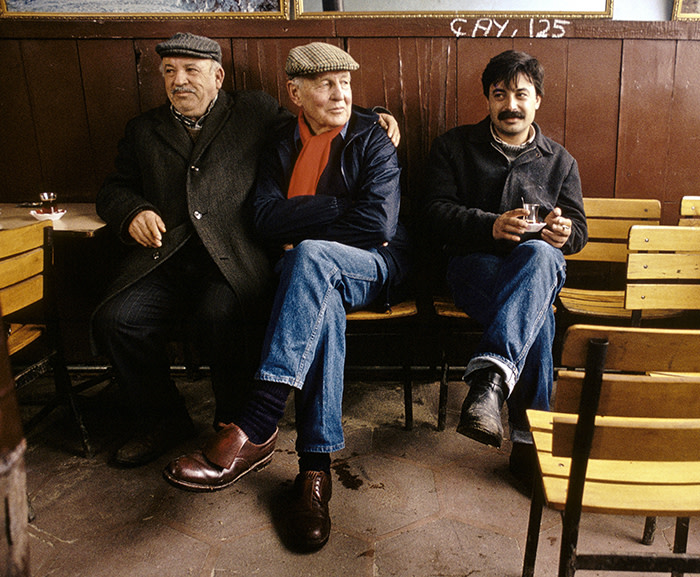
I didn’t quite appreciate it at the time, but this pillar of the aristocracy had composed the first work of comic travel writing. Its irreverence and jaunty flirtations with disaster prefigured the better known (and fictional) travelogues of Jerome K Jerome by several decades. In fact it would be almost a full century before anyone else picked up the baton.
The comic travelogue is a very British invention. For long centuries, our stubborn island mentality made every Channel crossing a voyage into the hostile unknown. “Abroad is unutterably bloody, and foreigners are fiends,” as one of Nancy Mitford’s characters put it. But once the empire began to collapse, that sneering superiority seemed almost instantly laughable. How preposterous, in retrospect, that such a tiny nation should have held dominion over half the planet. We had risen way above our station, taken ourselves far too seriously, and could only atone with self-ridicule.
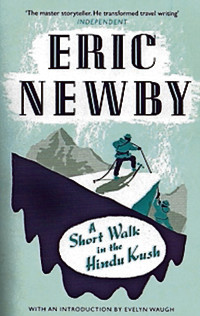
Published in 1958, Eric Newby’s laconically titled A Short Walk in the Hindu Kush was a pomposity-pricking parody of all those stiff-upper-lipped expeditionary travelogues. The book tells the story of Newby’s ascent of an unclimbed 20,000ft peak in the middle of some Afghan nowhere: a familiarly random challenge in the old British tradition, but one related with a very unfamiliar blend of self-deprecation and almost suicidal cluelessness. Nearing the summit, Newby — a haute couture fashion buyer unburdened with relevant experience — finds himself with an ice pick in one hand and a climbing manual in the other, flicking precariously through the pages in search of instruction.
A Short Walk begins with a glowing introduction by Evelyn Waugh, who astutely identifies “the essential amateurism of the English” as the bedrock of all native travel writing. And it ends with an encounter that seems to signal the changing of the guard, when Newby’s party bumps into the doyen of old-school gentleman explorers in a remote gorge. Wilfred Thesiger was then midway through another of the fearsomely hardcore five-year expeditions that his dry and patrician travel literature described. After the two parties agree to pitch camp together, Thesiger watches Newby and his colleague inflate their air-beds with utter contempt: “God, you must be a couple of pansies.”
Tragically for Thesiger, tomorrow belonged to the pansies. A Short Walk sold 500,000 copies, a vast total for the time, and Newby’s later travelogues would notch up more than a million sales. Reading some recent Amazon reviews of Thesiger’s travel books, I’m struck by the number that criticise their impersonality: readers complain about his “unemotional” writing and note that “we learn little about the author himself”. Newby’s comic touch, meanwhile, relied on his engagingly autobiographical style, and by placing himself centre stage — as a hapless anti-hero — he brought a new voice to the genre. Readers understood that beyond its capacity to entertain, humour could offer a deeper, more human insight into unfamiliar cultures than haughty, big-picture travelogues or dour and dutiful appraisals of museums and galleries. However hilarious Newby’s selections from his Bashgali phrase book, they also spoke evocatively of the brutalities of daily life in the Nuristan mountains: “I have nine fingers; you have ten.” “A dwarf has come to ask for food.” “Why do you kick my horse? I will kick you.”
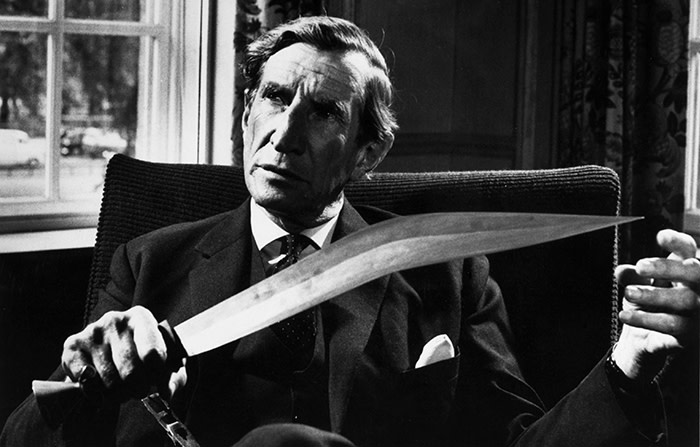
Looking back, Newby was a missing link between the aloof touring aristocrats of yore and the coming generation of mass-market wisecrackers. Later, as travel editor of The Observer, Newby fought a lonely battle against the irresistible rise of package tourism and universal sightseeing. “The distinction between travel and holiday had become apparent,” recalled Donald Trelford, his boss at The Observer, “and Eric represented travel — the further away from people the better.” Redmond O’Hanlon was a kind of 1980s Newby, tapping into the comedy of terror on excursions deep into some of the world’s remotest jungles. But it wasn’t until the 1990s that a travel writer dispensed with lonely misadventure and faraway mystique, and wrote an extremely funny book about places everyone now went to, enduring universal tourist setbacks along the way.
Neither Here Nor There wasn’t Bill Bryson’s first travel book, nor one of his most successful: today it ranks as an also-ran behind all those multimillion bestsellers. But I don’t think I was alone in finding it a revelation. In fact I know I wasn’t, as shortly after my first travel article appeared in print in 1991, an editor wrote to me, name-checking the book and asking if I’d thought about doing something similar. Revisiting the European cities he went through as an interrailing student, Bryson’s low-level mishaps are finessed into high comedy.
Near the start, he gets off at the wrong station in Brussels, and walks for hours down “the sort of streets where they sell swimming-pool pumps”, trudging towards what looks like the Palais de Justice from afar but slowly comes into focus as a dog-food factory. He has hungover rows with receptionists, and whiles away a long train journey honing revenge fantasies against an elderly man for folding his jacket in an excessively fussy manner. It was everything travel writing had never been about. But with the advent of budget airlines, independent touring had been democratised, shrinking the world and blurring Donald Trelford’s boundaries between travel and holiday. We were all travellers now, and Bryson was the bearded, grumbling everyman on the seat opposite, watching how we folded our jackets.
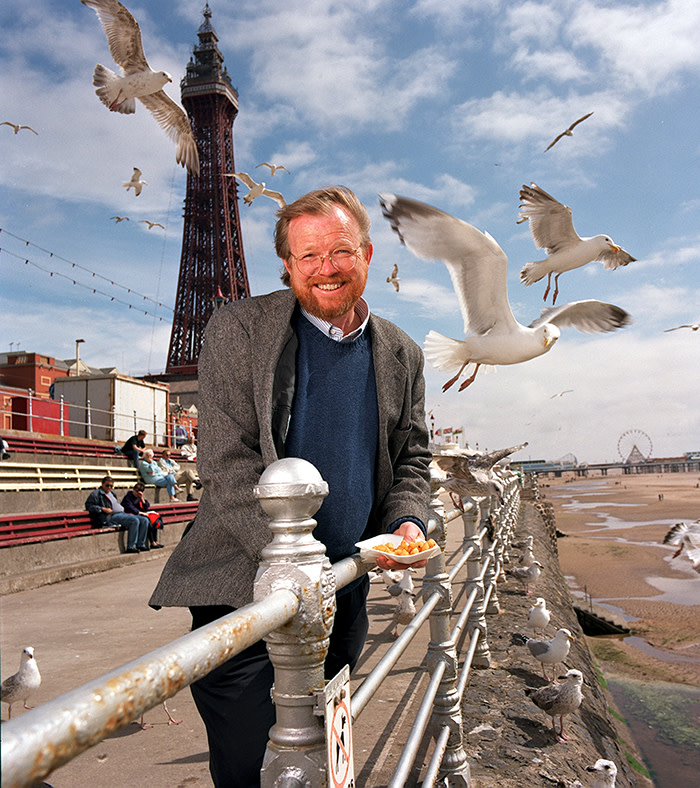
The Iowa-reared Bryson wasn’t British, of course, but he’d lived here for most of his adult life, developing a mid-Atlantic mindset that let him make fun of our continental neighbours without coming across as a graceless Jeremy Clarkson. It also afforded the semi-detachment that made a hit of Notes From a Small Island, a fondly exasperated bed-and-breakfast tour of his adopted homeland. Bryson single-handedly reinvigorated the comic-travel genre, not least through the sheer force of commercial success: Notes From a Small Island has sold more than 2m copies.
He also played his part in its next evolution, following a rash attempt to hike the 2,200-mile Appalachian Trail that would spawn 1998’s A Walk in the Woods. By the turn of the century, package tours had been done to death and jaded travellers — as well as armchair adventurers — were looking for more offbeat and challenging inspiration. With a nod to Newby, comic travel-writing revisited the overambitious quest.
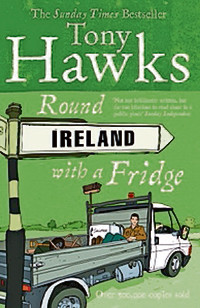
The native penchant for inherently absurd expeditions had long been a magnet for British comedians: in their first post-Python collaboration, Michael Palin and Terry Jones wrote Ripping Yarns, a television series parodying the colonial era and which included an episode memorably entitled “Across the Andes by Frog”. In 1999, comedian Tony Hawks made a drunken bet that would in due course result in Round Ireland with a Fridge (in which he hitchhikes round Ireland, with a fridge). By shifting 800,000 copies, this paved the way for a whole raft of high-concept authorial quests: Dave Gorman, another comic, travelling the world to meet other Dave Gormans (Are You Dave Gorman?); Pete McCarthy dropping in on namesake Irish pubs (McCarthy’s Bar); Hawks again (Playing the Moldovans at Tennis); and, well, me.
Last year, for my 10th book-related mission, I drove a 1924 Model T Ford 6,200 miles across the US, taking a circuitous route through the counties with the highest Trump vote. The rationale of Another Fine Mess: to bookend the American dream. In manufacturing 15m “Universal Cars” — and paying unheard-of wages to the workers who built them — Henry Ford launched his nation’s globe-bestriding golden age. The election of Donald Trump seemed to close a door on this era, and on the frugal, honest Midwestern values that defined Henry Ford and his creation. Why had the same small-towners who hero-worshipped this self-made Midwesterner now put their faith in a shameless, trash-talking New York property heir? It would be disingenuous to insist there was only one way to find out, but that’s never stopped me before.
The book’s predecessors have seen me walk across Spain with a donkey who really didn’t want to, time-travel through 2,000 years of smoky living history, and do an awful lot of cycling on bikes of ever-decreasing practicality. Along the way I’ve drawn inspiration from most of the authors mentioned in this article, though my debt to Bill Bryson has accrued the highest rate of interest. After I wrote up a tour of Britain’s worst places — You Are Awful (But I Like You) — I had to beg my publishers not to title it “Notes From a Crap Island”. Partly to retain a spoonful of self-respect, but mainly from a sense of unworthiness. To my enduring frustration, I’m not as good as Bryson, and sometimes wonder if I’ve tried to compensate by ramping up what springboard divers refer to as the degree of difficulty.
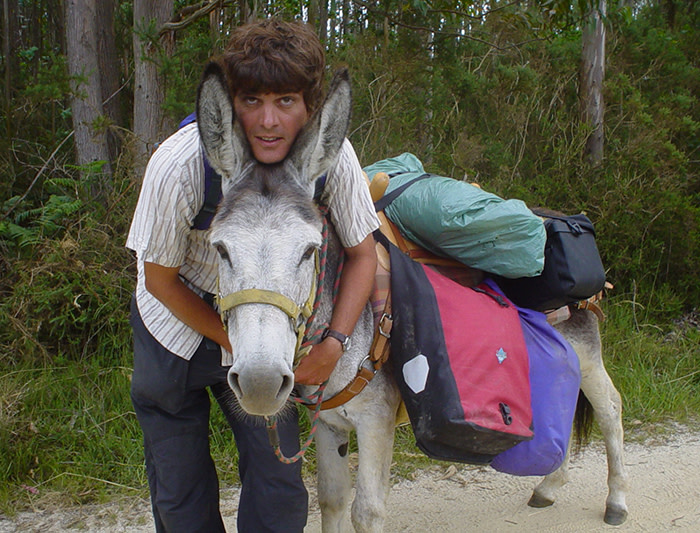
By his own cheerful admission, Bryson completed less than half the Appalachian Trail: the only way I’ll best him is by finishing whatever I’ve started, no matter how dotty or demanding. And it’s not just him I’m up against. When I rode the route of the Tour de France in 2000, it was seen as an impressive standalone feat, particularly by those who didn’t see the final average speed on my bike computer. But these days, thousands of ordinary people set out on extraordinary rides and hikes, without being forced to by an editor. Three years ago, riding 5,800 miles down the full length of the old Iron Curtain, the only other British cyclists I encountered told me they were en route to the Great Wall of China. I thought: thank Christ I’m doing this otherwise much less impressive ride on a ridiculous Communist-era shopping bike.
Not every daft quest comes with a guarantee of humorous jeopardy. I drove a decrepit Rolls-Royce to Venice and back in the confident expectation of countless showdowns with snide and gloating French mechanics, but the useless thing never broke down once. The right daft quest, though, can deliver uniquely fruitful interactions. A conspicuous but winsome travelling companion (tiny bicycle, donkey, Model T Ford) offers a disarming “in” with locals, particularly when it lets you down. If you break it, they will come. Who’d have thought Trump voters would be so unendingly kind and helpful to a foreign motorist in need?
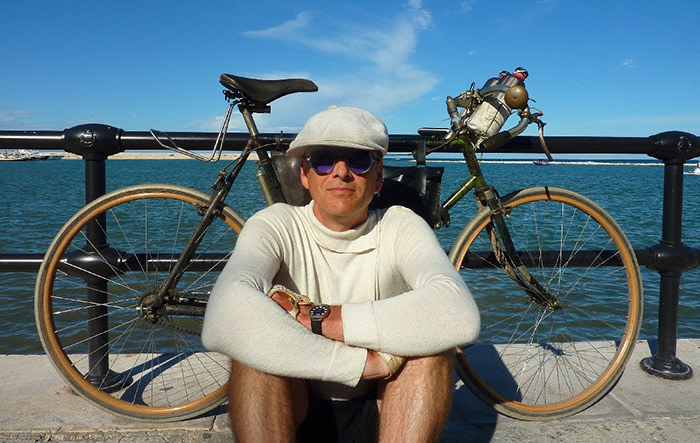
You’re looking for trouble, while praying you don’t find too much of it. Opting to recreate the murderous 1914 Giro d’Italia on a 1914 bike seems a very regrettable gimmick when you’re descending the Alps on wooden wheels with wine corks for brakes. After my Model T destroyed its third connecting-rod bearing, my quest was sailing very close to the wind. It hit an iceberg when the crankshaft snapped in two. And however instructive it is to discover how others deal with your adversity, in the end you’ll be spending at least as much time on a Newby-pattern inquest into how you deal with it yourself.
Full disclosure: these generally formidable biannual undertakings go right against my grain. By inclination, I’m a domestic potterer whose comfort zone lies at the end of his garden. I’m also a bit of an idiot. On the first morning of my trans-American drive, there I was on the motel forecourt with the bonnet up and my phone in my filthy fingers, with “Where do you put oil in a Model T?” entered in the Google search box. So my life oscillates unhealthily between extremes of inertia and adventure, which does at least mean I never have to pretend to be completely overwhelmed by whatever I’ve signed up for this time. It also means I stick my head in the sand rather than undertake any useful preparation, and panic messily when things inevitably go wrong. At the wheel of a runaway museum piece or in range of a bitter donkey’s buckaroo hooves, I’m never more than one false move away from a humiliating coroner’s report. Cause of death: the essential amateurism of the English.
‘Another Fine Mess’ by Tim Moore is published by Yellow Jersey
Follow @FTLifeArts on Twitter to find out about our latest stories first. Subscribe to FT Life on YouTube for the latest FT Weekend videos
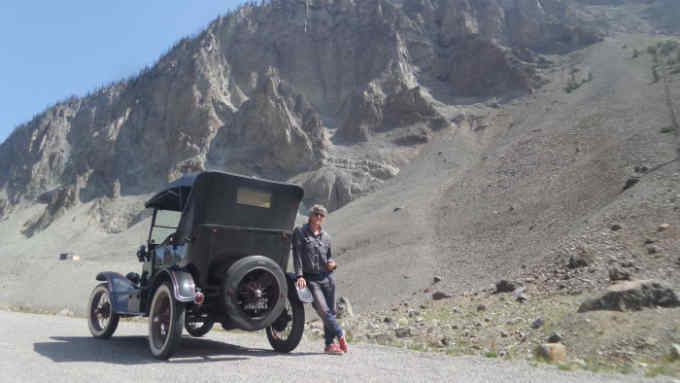
Comments